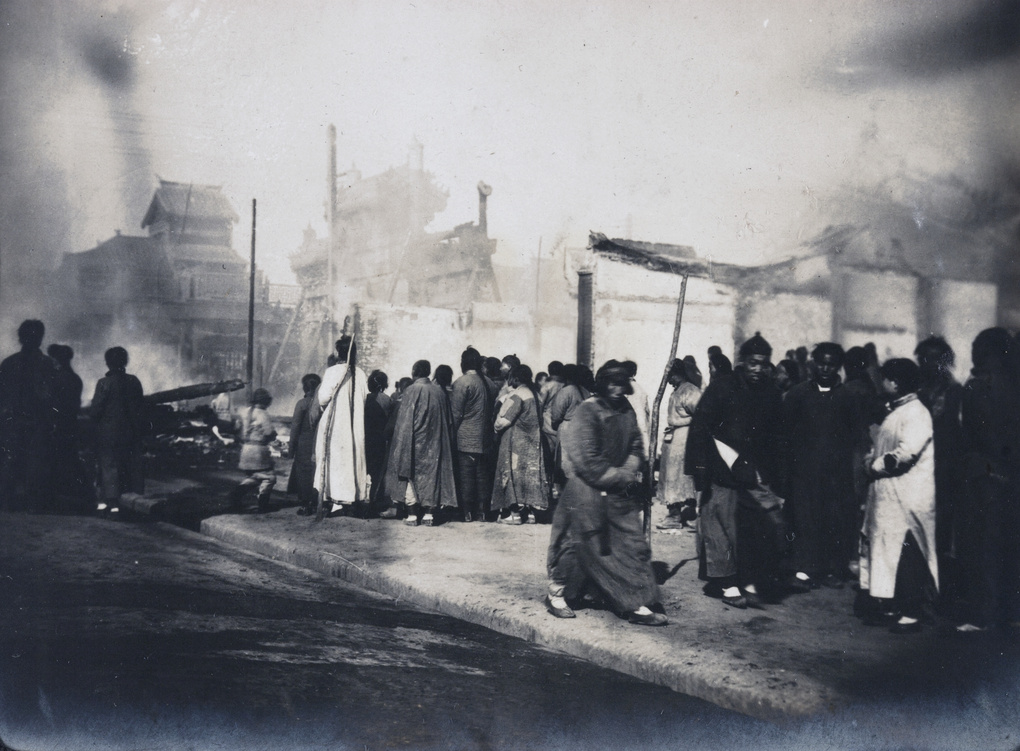Street after the Peking Mutiny, 1912

Collection
Identifier
OH01-106
Notes
University of Bristol - Historical Photographs of China reference number: OH01-106. A similar photo is reproduced in J.O.P. Bland 'Recent Events and Present Policies in China' (1912), p. 342. Captioned: 'Ruins after the looting, February 29th, 1912'. The Peking Mutiny (Ch: 北京兵变; pinyin: Beijing bingbian) erupted on the night of 29 February, 1912. Rumours of Yuan Shi-kai’s move to Nanjing as a concession to southern republicans, atop of long-standing problems of indiscipline among soldiers in Peking, triggered the insurrection. The upheaval was followed by widespread looting. Only the intervention of the turbaned soldiers of the old Manchu loyalist, General Chiang Kuei-ti (Ch: 蒋桂题;pinyin: Jiang Guiti; other: Chiang Kwei-ti), in early March brought the situation under control. (See EP Young, ‘Yuan Shih-k’ai’s Rise to the Presidency’ in M Wright (ed.), China in Revolution: The First Phase, 1900-1913 (New Haven, 1968), pp 438-42.). The pailou in the background was at the crossroads of Dongsi palou dajie ("Avenue of the Four Archways of the East") and Chaoyangmen dajie ("Avenue of the Gate facing the East").





